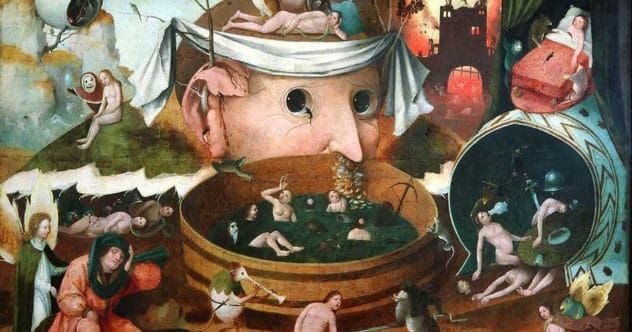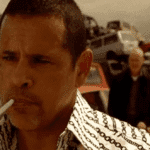Where does artistic inspiration truly come from? For many, it’s a blend of experience, emotion, and sheer imagination. But what if the wellspring of creativity lies in something far more mysterious, perhaps even unsettling? Prepare to delve into the fascinating and sometimes disquieting world of art born from altered states of perception. This isn’t just about painters; we’re exploring a wide spectrum of fine arts, from mesmerizing canvases to groundbreaking novels and epic poems.
We’re about to uncover 10 astonishing instances where famous artists, writers, and thinkers channeled their hallucinations – those vivid, real-seeming perceptions of things not actually present – into some of the most iconic works in history. Get ready to see these masterpieces in a whole new light!
10. Yayoi Kusama: Infinite Dots from Inner Worlds
Dive into the vibrant, polka-dotted universe of Yayoi Kusama. This iconic Japanese artist has been experiencing hallucinations since she was a child. Instead of being overcome by them, she channels these visions – often featuring repetitive patterns like dots and nets – into her breathtaking art.
Her famous Infinity Mirror Rooms are a direct manifestation of these experiences. They invite viewers to step into a boundless space, reflecting Kusama’s own sensations of an infinite, repeating self. For Kusama, art is not just expression; it’s a way to cope with her mental health struggles, transforming her inner turmoil into immersive, thought-provoking installations and paintings.
9. Jean-Paul Sartre: Nausea and Mescaline Crabs
The famous existentialist philosopher Jean-Paul Sartre wasn’t just exploring the human condition through thought experiments. In 1935, he embarked on a different kind of trip – one induced by mescaline. This psychedelic journey turned into a rather harrowing experience, filled with bizarre and frightening hallucinations.
Sartre reported being relentlessly pursued by imaginary crustaceans. Everyday objects around him would morph into animals, like his clock becoming an owl. Though the experience led to a temporary mental breakdown, it profoundly influenced his work. These unsettling visions, particularly the crabs (which he later understood as symbolizing his fear of solitude), crawled their way into his groundbreaking 1938 novel, La Nausée (Nausea), adding a surreal, visceral layer to his philosophical explorations.
8. Joan Miró: Hunger-Induced Surrealist Shapes
Sometimes, inspiration comes from the most unexpected places, even an empty stomach. Spanish surrealist Joan Miró knew this well. During his early, impoverished days as a starving artist in Paris, Miró would often go to bed without dinner. It was in these moments of hunger that vivid hallucinations would appear.
He described seeing shapes and forms on the ceiling of his studio. These weren’t just fleeting images; Miró diligently sketched them in his notebook. He believed these hunger-induced visions, along with his dreams, provided a direct line to his subconscious. This unique process fueled his iconic abstract style, leading to masterpieces like The Birth of the World (1925), where biomorphic forms dance across canvases, born from a blend of deprivation and deep artistic insight.
7. Edvard Munch: The Blood-Red Scream of Nature
Edvard Munch, the Norwegian artist behind the iconic painting The Scream, may have experienced life with bipolar disorder and psychosis. His art often delves into dark, emotional, and psychological themes, likely influenced by his personal struggles and vivid hallucinations.
Munch himself described the powerful experience that inspired The Scream. While walking with friends, the sky suddenly turned a terrifying blood-red. He felt an overwhelming sense of melancholy and exhaustion. As his friends continued, he stood frozen, feeling “an open wound in my breast” as a “great scream pierced through nature.” This intense visual and sensory hallucination was painstakingly transformed over eighteen months and multiple sketches into the haunting image that resonates with feelings of anxiety and existential dread worldwide.
6. Fyodor Dostoevsky: Confronting His Double
The great Russian novelist Fyodor Dostoevsky, known for his profound psychological insights, wasn’t a stranger to unsettling mental experiences. He suffered from an ailment that led to various hallucinations throughout his life, including auditory ones from childhood and what he termed “mystic terror” as an adult.
It’s believed that his novel, The Double, was directly inspired by an autoscopic hallucination – the eerie experience of seeing one’s own body as separate and external. This phenomenon, where the character Mr. Golyadkin encounters his exact duplicate, reflects Dostoevsky’s own potential encounters with such visions. His firsthand acquaintance with these strange perceptions allowed him to craft powerful narratives exploring the fragmented self and the mysteries of the human mind.
5. Charles Dickens: Ghosts of the Waking Dream
Charles Dickens, the master storyteller of Victorian England, also had a unique window into worlds beyond the ordinary. He experienced hypnagogic hallucinations – vivid, dream-like visions that occur in the transitional state between wakefulness and sleep. Coupled with his struggles with insomnia, these experiences likely fueled his imagination.
Many of Dickens’s characters grapple with similar phenomena. Think of Ebenezer Scrooge in A Christmas Carol, visited by four ghosts, leaving him to wonder if they were dreams or reality. Or Oliver Twist, who, while falling asleep, sees his enemies as if they were truly there. Dickens masterfully wove these instances of dream-reality confusion and fleeting perceptual experiences into his narratives, adding layers of psychological depth and otherworldly atmosphere to his beloved tales.
4. William Blake: Visions of Angels and Eternity
Poet, painter, and printmaker William Blake lived a life filled with extraordinary visions that deeply shaped his artistic and spiritual world. From a very young age, Blake reported encounters that transcended ordinary perception. At just four years old, he claimed to have seen God’s face looking through his window.
Around the age of ten, he witnessed a tree filled with angels, their wings sparkling like stars. Throughout his life, these hallucinations continued, with archangels supposedly dictating poetry to him and infusing the themes of his mystical visual art. He also heard voices, including that of his deceased brother and various angels. While some retroactively suggest conditions like bipolar disorder or temporal lobe epilepsy, Blake considered these experiences to be genuine spiritual revelations, fundamental to his unique and prophetic body of work.
3. Jonathan Swift: Gulliver’s Travels and Altered Perceptions
Jonathan Swift’s satirical masterpiece, Gulliver’s Travels, has given us terms like “Lilliputian” to describe the tiny and “Brobdingnagian” for the gigantic. But did you know these fantastical elements might have roots in Swift’s own altered perceptions?
Swift suffered from symptoms akin to Ménière’s disease, a condition that can affect balance and hearing, and sometimes cause cognitive changes. It’s theorized that the novel’s memorable depiction of the colossal inhabitants of Brobdingnag and the miniature people of Lilliput were inspired by Swift’s own visual hallucinations. These experiences of seeing figures as disproportionately large or small may have been translated by Swift into his allegorical tale, creating enduring literary imagery from his personal sensory disturbances.
2. Hieronymus Bosch: Painting The Garden of Unearthly Visions
Gazing upon Hieronymus Bosch’s triptych, The Garden of Earthly Delights, is like stepping into a fever dream. Its panels teem with bizarre hybrid creatures, surreal architecture, and scenes of otherworldly revelry and torment. What could have inspired such fantastically strange imagery?
While Bosch’s fervent religious beliefs undoubtedly played a role, some scholars suggest his unique visions might relate to “hallucinations of the sane,” possibly linked to conditions like Charles Bonnet Syndrome, where visually impaired but mentally sound individuals experience complex hallucinations. It’s plausible Bosch translated his own vivid, perhaps unsettling, internal visions onto canvas. He skillfully framed them within the religious iconography of his era, creating works that were both doctrinally interpretable and profoundly, disturbingly original.
1. Dante Alighieri: A Divine Comedy Born of Waking Dreams?
Dante Alighieri’s epic poem, The Divine Comedy, takes readers on an unforgettable journey through Hell, Purgatory, and Heaven. The imagery is so vivid and surreal that it’s natural to wonder about its origins. Could Dante’s own hallucinations have played a part?
Some theories suggest Dante may have suffered from narcolepsy, a neurological disorder impacting sleep-wake cycles, possibly accompanied by cataplexy (sudden muscle weakness triggered by strong emotion). Throughout the poem, the fictional Dante frequently references sleep, weariness, vivid dreams, and sudden transitions between waking and dream-like states. These episodes, often triggered by intense emotions, mirror symptoms of narcolepsy and associated hypnagogic hallucinations. It’s plausible that Dante drew upon his own extraordinary perceptual experiences to craft his timeless vision of the afterlife.
From the swirling dots of Kusama to the infernal landscapes of Dante, it’s clear that the human mind can be a source of both profound torment and extraordinary creativity. These ten artists, across various disciplines, demonstrate a remarkable ability to transform their personal, often challenging, hallucinatory experiences into art that resonates, provokes, and endures.
Their stories remind us that art can emerge from the most unexpected corners of human consciousness, turning what might be seen as a burden into a unique vision shared with the world. The line between madness and genius, or perhaps between affliction and inspiration, can indeed be a fine one, resulting in works that continue to captivate and inspire us centuries later.
What are your thoughts on these incredible stories of artistic vision? Do you know of other artworks inspired by hallucinations or unusual mental states? Share your insights and favorite examples in the comments below!










